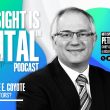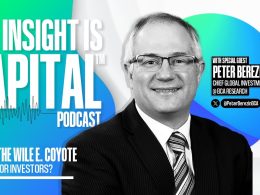The big picture of investments: Eight points to live by

By Keith Matthews
Partner and Portfolio Manager
Tulett, Matthews & Associates Inc.
Twenty years ago, as a young advisor recommending exchange traded funds to clients, I often found myself getting bogged down in the specifics and details of ETFs. While it is important that people know how an ETF works, it is imperative they understand its role in the bigger picture of their investments. Over the years, I came to recommend a set of eight principles to help my clients become empowered investors.
Devising a strategy and implementing it are two different things. The following eight principles are but a small part of an overall financial strategy:
1. Steer clear of the most common investment pitfalls:
- Lack of an investment policy statement
- Lack of an investment philosophy
- Trying to profit by timing the market
- Chasing performance
- Lack of proper diversification
- Building portfolios based on expert predictions
- Letting behavioural biases get in the way
2. Recognize conflicts of interest in the financial services industry.
By understanding how the financial industry works, you will be able to take better care of your money. A qualified, independent, fee-based advisor does not depend on commissions or sales fees and is able to offer unbiased advice and recommend the best tools in the marketplace.
3. Choose asset class investing.
Asset class investing has been proven to have a bigger impact on your portfolio than market timing or stock picking. It is the most important step in taking control of your investments.
4. Build a diversified portfolio that is highly structured, organized and follows a rebalancing process.
Most investors and many advisors misunderstand the concept of diversification, believing that they are diversified because they own 15 stocks or 10 mutual funds. Too much overlap equals improper diversification and can be a recipe for disaster.
Your portfolio should be rebalanced on a regular basis to ensure that it is in line with your long-term “target” allocations.
5. Choose passively managed, index-based or factor-based asset class investments that are tax efficient.
Index- or factor-based asset class investment tools (such as ETFs) have been shown to consistently outperform actively managed funds. Other benefits to investors and advisors alike include being transparent, precise, tax efficient and flexible.
6. Discover that risk and return are related.
Consider including small and value companies when designing your portfolio. Use the Fama/French three-factor model to create the optimal portfolio structure for long-term success. This model shows that:
- Stocks outperform bonds
- Value stocks outperform growth stocks
- Small company stocks outperform large company stocks
7. Create an investment policy statement (IPS).
An IPS defines your investment goals, describes your investment philosophy and determines how your portfolio will be managed. A qualified, fee-based investment advisor can help you create an IPS that will keep your investments on track and within your specified risk parameters, greatly enhancing your investment experience.
8. Co-ordinate your investments with your life plan.
Investments and life should work together; a well-considered plan is crucial to ensuring that your dreams become financially viable.
Success in investing – as in life itself – is the result of hard work, proper diligence and the application of the best strategies. Applying these principles to your broader financial strategy will increase your odds of achieving long-term financial success, and make you an empowered investor.
Keith Matthews is a partner and portfolio manager at Tulett, Matthews & Associates, a discretionary portfolio and wealth management firm in Montreal. He is the author of The Empowered Investor: A Canadian Guide to Building a Better Investment Experience. A complimentary e-book of the third edition is available for download at www.empoweredinvestor.ca.
This article and the views expressed herein are the author’s own work and not necessarily shared by CEFTA, ETF World magazine, the publisher or the author’s employer.
This post was originally published at ETF World Magazine Canada















